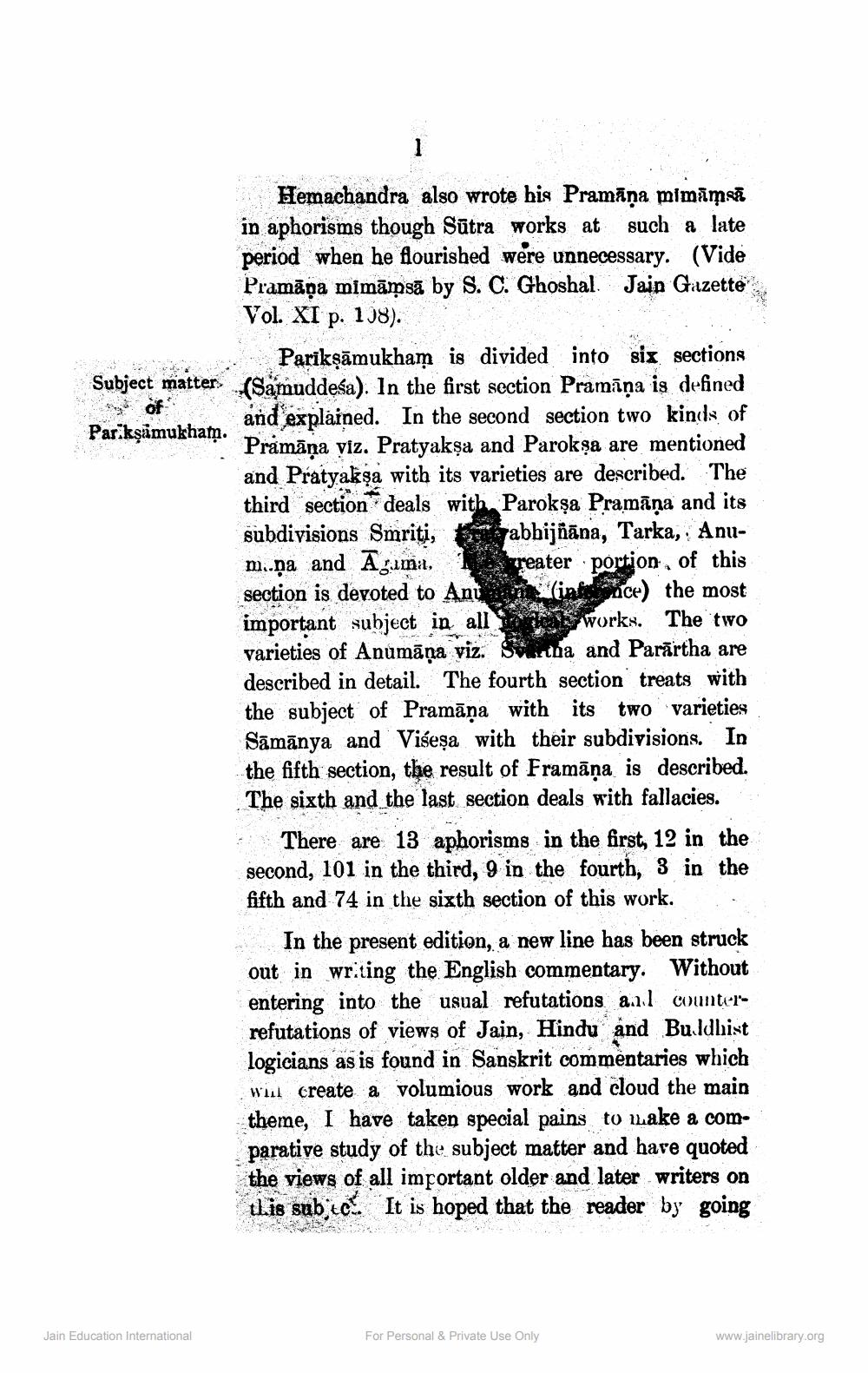________________
Hemachandra also wrote his Pramāņa pimāmsă in aphorisms though Sūtra works at such a late period when he flourished were unnecessary. (Vide Pramāņa mimāmsā by S. C. Ghoshal Jain Gazette Vol. XI p. 138).
Parīkņāmukham is divided into six sections Subject matter. (Samuddeśa). In the first section Pramīņa is defined Parikşămukham.
and explained. In the second section two kinds of Pramāņa viz. Pratyakşa and Parokşa are mentioned and Pratyakşa with its varieties are described. The third section deals with Parokşa Pramāna and its subdivisions Smriti, abbijñāna, Tarka, · Anum.na and Agima. Ne rreater portion of this section is devoted to Antenne (inte ance) the most important subject in all as works. The two varieties of Anumāņa viz. Svunna and Parārtha are described in detail. The fourth section treats with the subject of Pramāṇa with its two varieties Sāmānya and Višeşa with their subdivisions. In the fifth section, the result of Framāņa is described. The sixth and the last section deals with fallacies.
There are 13 aphorisms in the first, 12 in the second, 101 in the third, 9 in the fourth, 3 in the fifth and 74 in the sixth section of this work.
In the present edition, a new line has been struck out in writing the English commentary. Without entering into the usual refutations and counters refutations of views of Jain, Hindu and Buldhist logicians as is found in Sanskrit commentaries which will create a volumious work and cloud the main theme, I have taken special pains to make a comparative study of the subject matter and have quoted the views of all important older and later writers on this sub tc. It is hoped that the reader by going
Jain Education International
For Personal & Private Use Only
www.jainelibrary.org




